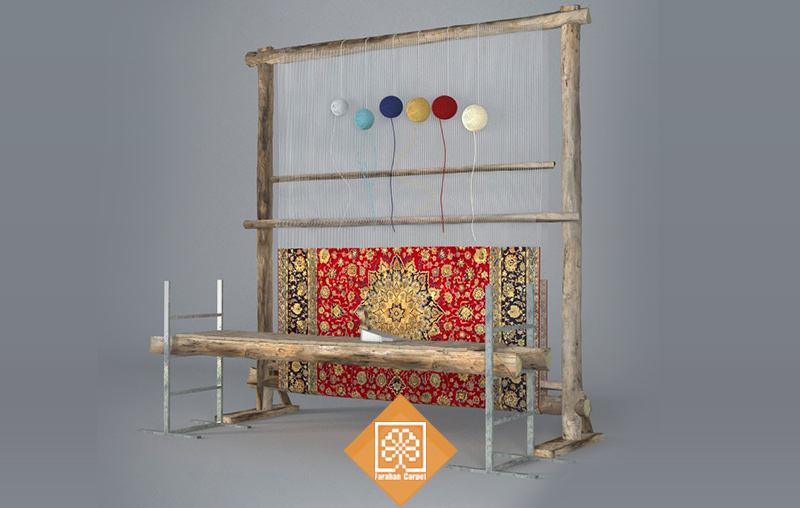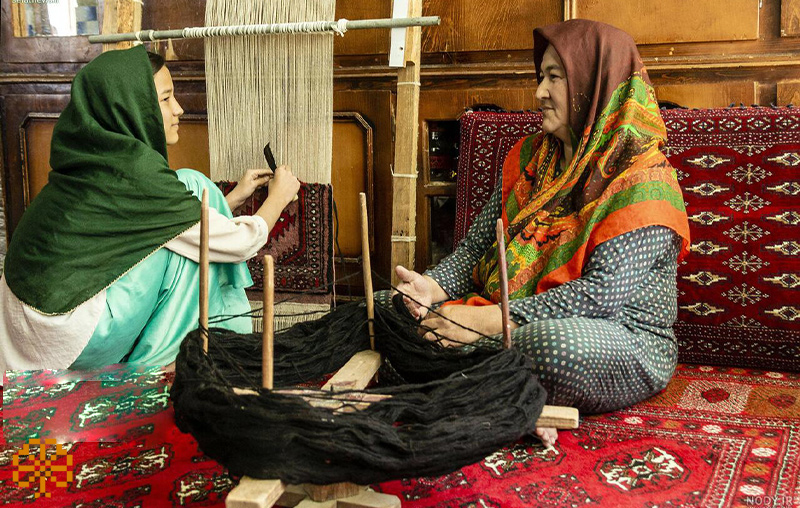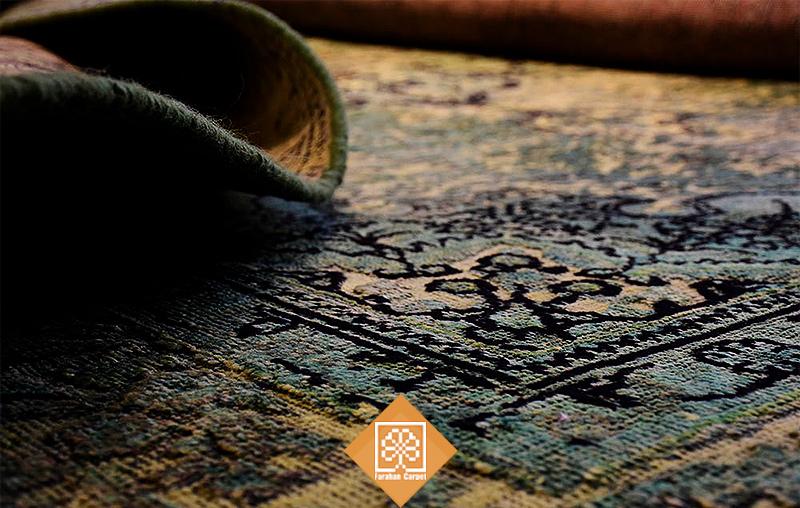What is carpet weaving and how is it done?

carpet weaving or turning the carpet over the carpet is one of the most important steps in weaving the carpet that every carpet weaver and handmade carpet will face. Failure to follow the tips to do this in a principled manner may cause the weaver to lose all effort and the rug to lose its original structure.
In this article, we try to review the tips and how to do this after learning the basics of Farahan carpet and explain the way to do it step by step so that you can do it in the best way.
What is carpet weaving?
When hand-woven carpets and rugs start to weave, the weaving starts from the bottom of the rug, and as the knots are woven together and completed in the term of rug rugs, the rug rises upwards. .
Now, at a time when the amount of weaving from the carpet will reach stages that due to the height of the amount of woven from the carpet, the weaver is no longer able to do his job easily and in the so-called hand does not reach up, here is an action called lowering the carpet Will help the weaver.
Drawing is actually lowering the carpet wefts in a proper way, by which the woven parts of the carpet are directed to the back of the work and the non-woven and empty wefts are transferred to the work to continue weaving on They are done.
You may have been asked what’s what? Each handmade rug has three dimensions; Carpet length or warp, width or carpet powder, height or full carpet. The warp is the same as the warp or carpet, which is in fact a thin thread that is installed on the hanger in a multi-layered and twisted way, and for the texture of the carpet, it must be installed vertically on the hanger.
Carpet weaving is installed by a professional craftsman on the carpet hanger using tools such as a notebook, wrench, pencil, meter, etc., and the carpets are weaved in both Turkish and Persian, depending on their texture.
So, at the bottom of the carpet and tableau carpet, it is your duty to move these wefts that are installed on the hanger so that the non-woven parts of the weft can be replaced with its weave. So you probably have to guess that you will be faced with a precise and a little hard work that if not done properly, your entire carpet may be damaged.
Read more: Ardakan handmade carpet | Check specifications + shopping guide
Step-by-step instruction for laying carpets and rugs
The most important thing in the practice of pulling down carpets and rugs, as we mentioned, is accuracy, and therefore we recommend that you do all the things that we will explain carefully.
The first steps of pulling down the carpet
1. Before laying the carpet, check that the texture is done correctly. That is, the size of the tissue is symmetrical and proportionate, and the work is done at the same density and radius that was determined from the beginning.
2. You need not to ruin the transverse and horizontal size of the carpet in the lowering operation. Therefore, it is necessary to measure the width of the carpet before doing this, and at the end of the lowering, take this size again and compare it with the initial value, and if it was more or less, by moving the warps (horizontal threads). Return it to its original position with your fingers to prevent the carpet from falling apart.
3. For ease of work and more accurate case 2, you can mark the location of the rugs and carpets with a pen or magic on the upper part (commander) and the lower part (under) so that you can draw the carpet at the bottom. Return it to its original location. Mark the shading units in Azeri textures.
4. It is better to fasten the backed folds of the carpet with adhesive tape or 5 cm glue to prevent the folds from moving during the lowering of the carpet.
5. In order to be able to pull down for the next time, to find out when and in which ridge you did this for the first time, it is better to pass a piece of cream in a U-shape to the back through the loops to determine exactly what You did part of the texture.
6. Open the extra threads that are tied to the carpet hangers to prepare the threads for lowering the carpet.
7. Do not forget to measure at all stages; Draw a uniform line on the strands to monitor the uniformity of the weaving process and be prepared to pull down.
The final steps of carpet laying
1. Start loosening the two top screws with a suitable wrench. Do this at the same time and with the same number of open turns, that is, if you turn the left turn 4 times, turn the right turn the same number, and remember to remember the number of turns, because in the end, to tighten the screws, you must Turn the screws the same number of times.
2. Loosen the screws until they are loose enough to fully loosen your screws. At this stage, depending on the dimensions of the carpet and the counting, we do the pulling with the appropriate tools in such a way that it is done with the least error and skew.
3. After loosening the rafters to pull down the carpet, you should try to guide the rafters to the back. To do this, it is better to take the woven parts of the carpet or carpet with both hands at the same time with two hands and guide it downwards by hand pressure.
4. Continue pulling down the carpet and the carpet table until at least 10 cm of the woven part of the carpet remains in place and the strength of the fabric base is maintained to continue the work.
5. Now check that the strands at the top and the woven parts are not tilted or pressed too much, if this happened, adjust them with your hands and fingers and use the symbols mentioned in the previous section to Use this.
6. Remember that if at the first time you checked the texture of your carpet, the surface of the carpet was uneven, meaning that your texture was slightly asymmetrical and up and down, you should not try to smooth the surface at all when pulling down, because doing so Your carpet will eventually tilt. In fact, any shape of the carpet that was before the lowering should be the same at the end of the lowering, and you should eliminate these irregularities during weaving and tapping, not by lowering the carpet.
7. After the final check of the dimensions, start tightening the screws with the carpet and be careful that the warps do not move while doing this.
In this article, we have tried to thoroughly review and teach all the necessary points about carpet and rug laying. If you have any questions or doubts about what has been said, please share it with us in the comments section.





